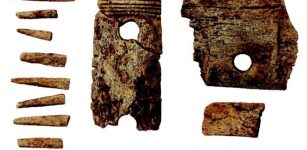Did Ancient Romans Use Four-Meter Deep Shafts As Refrigerators During Summer?
AncientPages.com - A team of archaeologists working near the Swiss city of Basel are trying to figure out the purpose of ancient deep shafts built by ancient Romans at Augusta Raurica, an archaeological site located on the Rhine River in northern Switzerland.
The four-meter deep structures were discovered in 2013 and it is believed they could have been ancient refrigerators.
The shafts were filled with snow and ice during winter and then covered with straw to keep the space cool well into the summer months. This then allowed for everything from cheese to wine – and even oysters – to be preserved during warm weather, reports The Local.ch.
Will a team lead by Peter-Andrew Schwarz from the University of Basel be able to demonstrate that the Augusta Raurica shafts were indeed used as fridges?
A first attempt to recreate the ancient cool box failed after archaeologists at the dig filed the shaft with snow all in one go. But that experiment showed temperatures in the shaft were above freezing point even in winter. The second try was more successful: the shaft was gradually filled with snow and ice blocks were placed inside as well. Using these methods, snow remained until June.
Now, researchers plan to use methods developed by the so-called ‘nevaters’ or ice-makers on the Spanish island of Majorca. Schwarz and his team will place 20–30-cedntimeter-thick layers of snow into the shaft. These individual layers will then be compacted down with a straw cover placed on top of each one.
“With this method, people in Majorca could keep food cool in summer before the arrival of electric fridges,” Schwarz told regional daily Basler Zeitung in 2017.
The results of this experiments will be possible to observe in August.
AncientPages.com





















